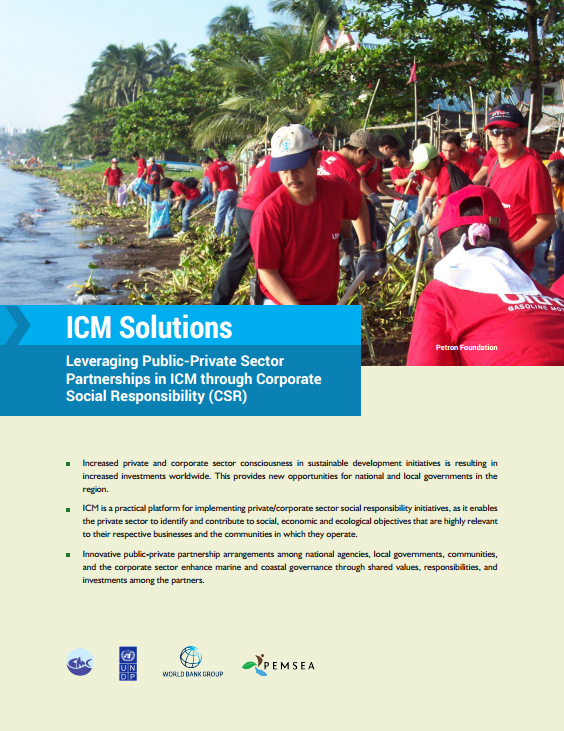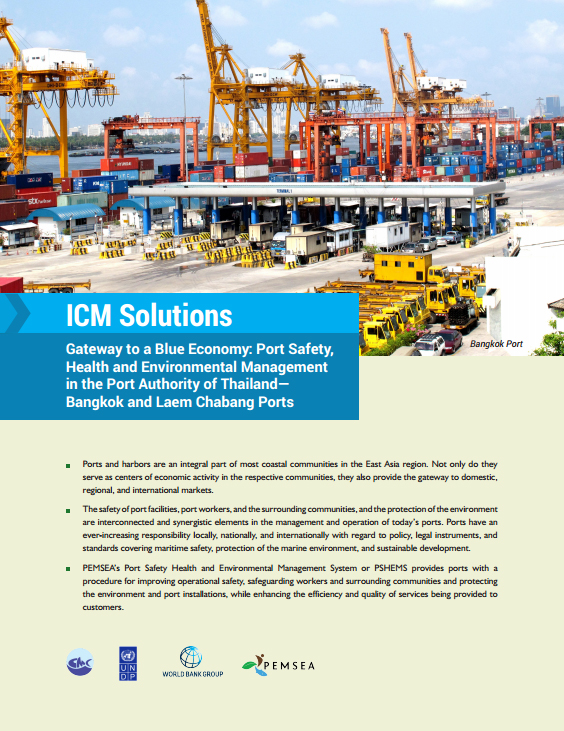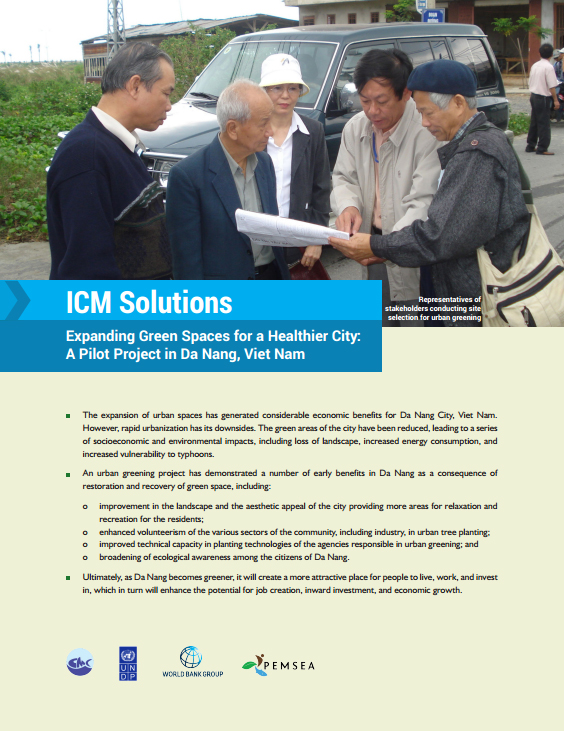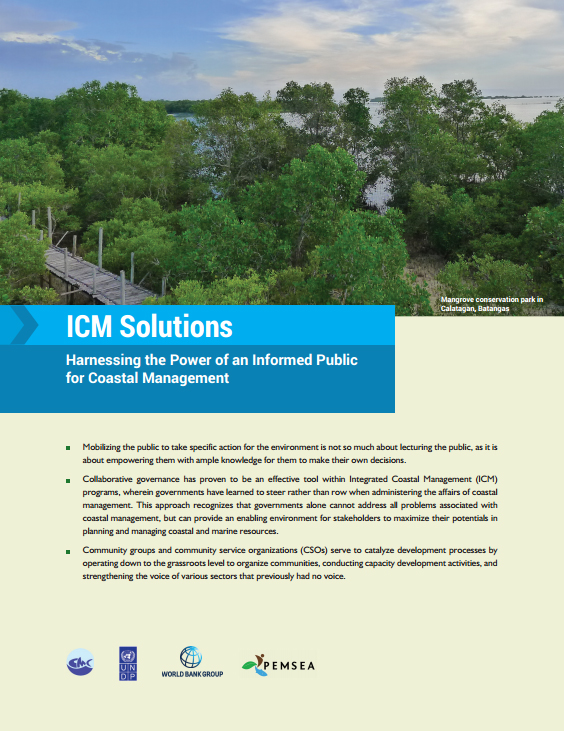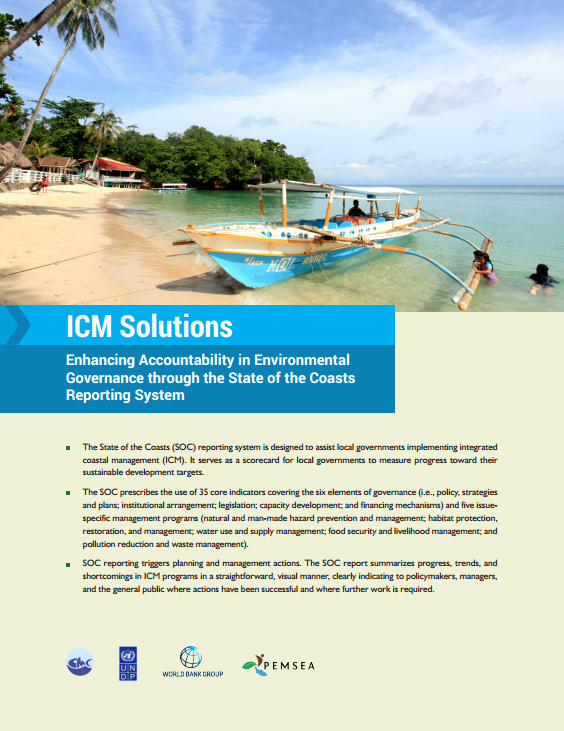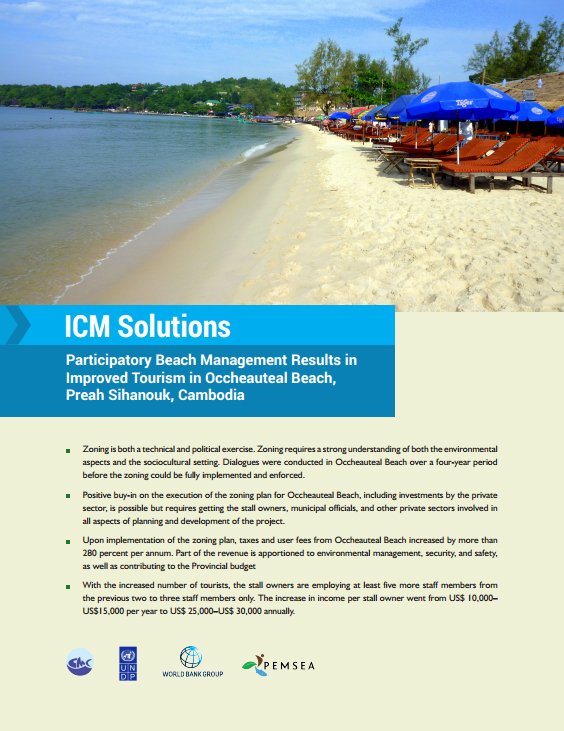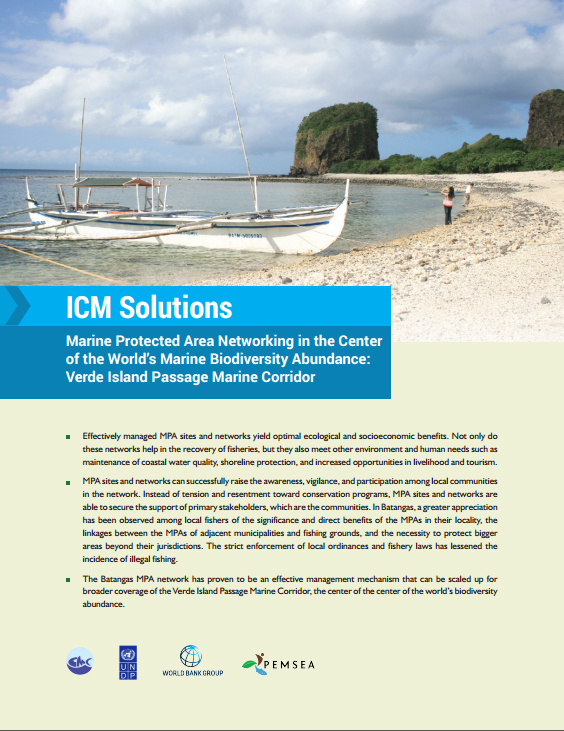
Breadcrumb
Engaging Civil Society Organizations in Sustainable Development of Coastal and Marine Areas through ICM
As immediate users of coastal areas, civil society groups have a crucial contribution to the development and implementation of ICM programs. Being users, they tend to have a deeper affinity to what is being managed. This leads to better and broader understanding of issues at stake and greater commitment to take action because of an inherent sense of ownership of place. Most often, environmental degradation is readily recognized by civil society groups because it comes along with a marked decline in livelihood.
Print version is available for FREE. Pay only for the shipping cost.
Leveraging Public-Private Sector Partnerships in ICM through Corporate Social Responsibility (CSR)
Corporations around the world as well as their shareholders are becoming increasingly conscious of the need for socially responsible behavior. While corporate objectives normally revolve around financial returns, many corporations see social and economic value in making a difference in the community in the form of CSR. There represents an opportunity for the local government and the private/corporate sector to forge partnerships and pool projects and resources in order to maximize impact.
Print version is available for FREE. Pay only for the shipping cost.
Gateway to a Blue Economy: Port Safety, Health and Environmental Management in the Port Authority of Thailand - Bangkok and Laem Chabang Ports
Port authorities and operators face a number of challenges with respect to their role and impact in sustainable development of coastal areas. The development and adoption of international safety, environment and security standards by global bodies have emphasized that an effective management system must not only encompass operational activities, but also build quality, safety, health and environmental objectives and procedures into each process. It is with this challenge and opportunity that the Port Authority of Thailand decided to implement the PSHEMS in Bangkok Port and Laem Chabang Port.
Print version is available for FREE. Pay only for the shipping cost.
Improving Community Livelihood and Fisheries Management through Volunteerism and Entrepreneurship
Fishing is a main source of income in Stung Hav District with about 75-80 percent of the population occupied as artisanal fishers or about 9,500 individuals. Most of the fishers in Stung Hav share the belief that when there is increased competition and less catch, bigger boats and more efficient fishing gears are required to harvest more fish. Some fishers are prompted to borrow money from the local bank or private money lenders and others sell their properties to “modernize” their fishing gear. Lack of fish begets stronger resolve to get more fish.
Print version is available for FREE. Pay only for the shipping cost.
Expanding Green Spaces for a Healthier City: A Pilot Project in Da Nang, Viet Nam
The GDP growth rate of Da Nang for the period 2002-2012 was 12.53%, making it one of the fastest growing cities in Viet Nam. Urbanization and industrialization over the past decade have decreased the land use area for forestry and agriculture. Natural disasters that struck Da Nang in the past have also caused destruction and uprooting of trees and vegetation, and aggravated soil erosion.
Print version is available for FREE. Pay only for the shipping cost.
Harnessing the Power of an Informed Public for Coastal Management
Mobilizing the public to take specific action for the environment is not so much about lecturing the public, as it is about empowering them with ample knowledge for them to make their own decisions.
Enhancing Accountability in Environmental Governance through the State of the Coasts Reporting System
While environmental profiles and reports were being prepared at local and national levels and covered specific sector/s, there was no integrated monitoring, evaluation, and reporting tool that was specifically intended for local governments implementing ICM programs.
Print version is available for FREE. Pay only for the shipping cost.
Participatory Beach Management Results in Improved Tourism in Occheauteal Beach, Preah Sihanouk, Cambodia
In Preah Sihanouk, beaches are a major source of income for the province through tourism. But investments to improve or even maintain the beach and its facilities were scant. The steady upswing in tourist arrivals was matched by the development of an increasing number of tourist accommodations and establishments. In 1993, there were only 19 hotels and guesthouses but, by 2014, this has grown to 57 hotels and 221 guest houses. Despite the welcome economic benefits of coastal tourism in the province, serious social and environmental problems have arisen, including illegal construction along the beach area.
Print version is available for FREE. Pay only for the shipping cost.
Marine Protected Area Networking in the Center of the World’s Marine Biodiversity Abundance: Verde Island Passage Marine Corridor
The Province of Batangas has shown significant progress in expanding its management strategies for sustainable development of the coastal and B27marine areas over the last 14 years. Starting in Batangas Bay in 1994, in partnership with PEMSEA, the ICM system has been replicated, now covering the entire coastline of the Province (extending to Balayan and Adjacent Bays in year 2000, and Tayabas Bay and Adjacent Bays in 2005, in partnership with World Wide Fund for Nature-Philippines [WWF-Philippines] and Conservation International-Philippines [CI-Philippines]).
Print version is available for FREE. Pay only for the shipping cost.

